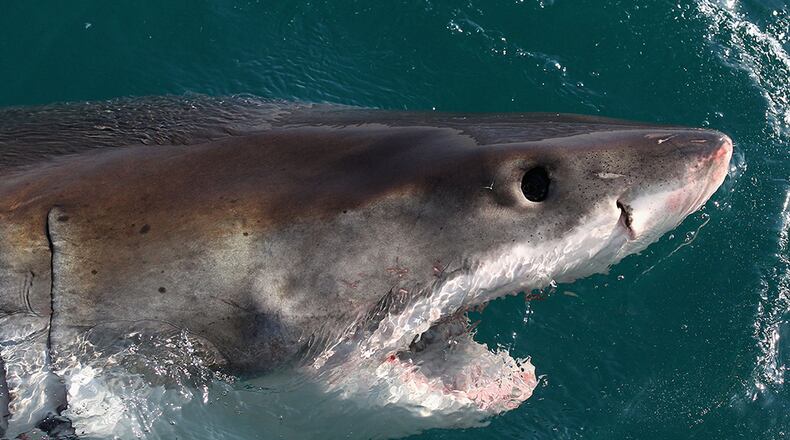A record 98 shark attacks took place around the world in 2015.
George Burgess, director of the Florida Program for Shark Research in Gainesville, said not to expect a repeat this year.
That’s good news as summer kicks in and beachgoers begin flooding swimming spots around Florida, where a majority of the world’s shark bites take place.
Last year’s record number, Burgess said, was due largely to the warming effect on ocean waters caused by the global weather phenomenon known as El Nino and by climate change. The wamer water provided a greater range of territory for sharks to navigate and longer periods of the year for humans to encounter those sharks in the water.
A solid economy and few major storms on the East Coast also contributed to a spike to 98 shark attacks in 2015 from 72 in 2014.
“I rather doubt that we’re going to have as high a year as we did last year,” Burgess said. “I would imagine it’s going to be in the 70s or 80s. That 98 was highly out of character.”
Want more stories about sharks? Click here.
As of June 1, there have been 23 shark bites worldwide this year with one fatality in the waters off the South Pacific island of New Caledonia, Burgess said. A dozen of those bites took place in the U.S. with Florida leading the way with seven.
Not included among those Florida bites was one that occurred May 15 at Red Reef Park in Boca Raton and gained worldwide attention. A 23-year-old woman was bitten by a 2-foot nurse shark that latched on to her right forearm and didn't let go even after she emerged from the water.
Witnesses has seen people antagonizing the shark by grabbing its tail, which likely resulted in the attack. Because the attack was “provoked,” Burgess said, it is not included on his list, which only documents unprovoked attacks.
The total of 23 attacks five months into 2016 is “perhaps a guarded sign of optimism” that this year’s final tally will be far below that of 2015 and closer to the average of 77 worldwide attacks from 2009 through 2014.
But don’t count on it, Burgess said.
Summer vacations are only beginning in the U.S., which annually accounts for 50 to 75 percent of all attacks. In Florida, September, August and July rank first, second and third as the months with the most attacks. Most incidents between a human and shark take place within 100 feet of the shore.
There were 30 shark bites off the coast of Florida in 2015, according to the International Shark Attack File. The record in the state was 37 shark bites in 2000. The U.S. had 59 attacks last year, topping the previous record of 53 in 2014.
Burgess stresses that any person’s chances of serving as lunch for a shark are remote — one chance in 11.8 million by one estimate. In comparison, the odds of getting struck by lightning are 1 in 500,000, according to the federal Centers for Disease Control and Prevention.
Even though the number of shark attacks has gone up, Burgess said the likelihood of getting bitten is dropping.
“The attack rate is not going up,” Burgess said. “In fact, it’s going down and the reason it’s going down is that we have so many people in the water involved in aquatic activities that we’re literally swamping the sharks out of their own environment.
“Individually, the chances of us being attack have never been lower.”
About the Author
The Latest
Featured


